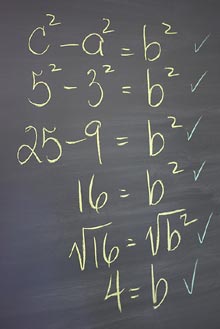 Algebra is a form of mathematic which replaces unknown
numbers with letters, and is a very powerful way to solve problems.
When we replace an unknown number with a letter it is called a
“literal number”
Algebra is a form of mathematic which replaces unknown
numbers with letters, and is a very powerful way to solve problems.
When we replace an unknown number with a letter it is called a
“literal number”
Literal numbers can be used to represent either variables (the value of the letter can change) or constants (the value of the letter never changes). We have all used algebra at some point in our lives and were probably exposed to it at an early age.
Example
For example, we all learned the area of a rectangle is equal to the width (w) times the height (h), while in algebraic terms this equation looks like the following:
A= w x h
So once we know the width and the height we can solve the equation.
A term is an algebraic expression involving letter and/or numbers (called factors) which are multiplied together.
Example
3x
Is an algebraic expression, with a single term which has the factors 3 and x in it.
Example
3x + 6y
Is an algebraic expression which has two terms in it 2x and 6y.
The first term has two factors 3 and x and, the second term has two
factors 6 and y.
| LESSON 2 |